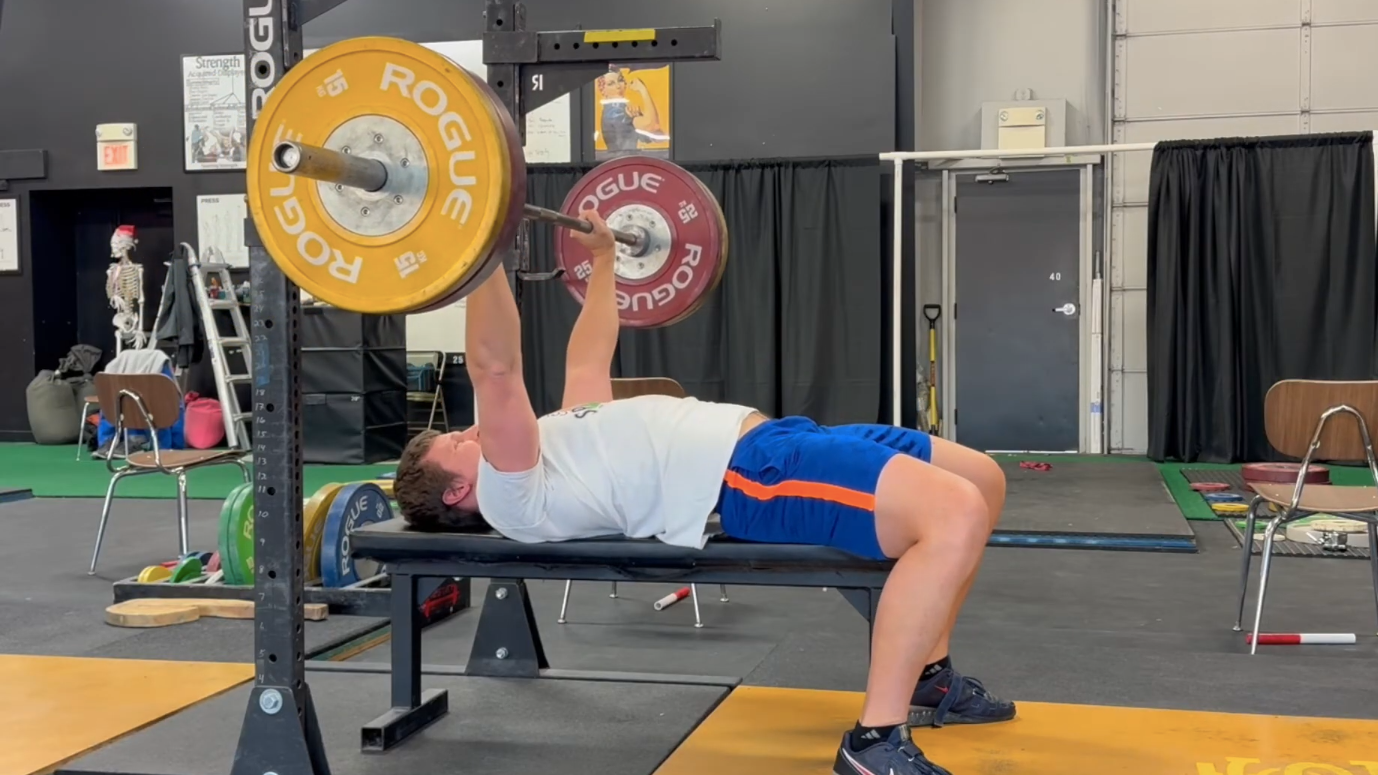5 Ways You're Ruining Your Bench Press!
/(A Blast from the Past article originally posted on 08/18/23)
Let’s cover a few mistakes that you might be making with your bench press, and then let’s fix them fast.
Mistake #1: Wrong (or Nonexistent) Focal Point
When you bench, look at an immovable target - specifically, look directly above you at a point on the ceiling. When you start each rep, although you’re looking at the ceiling, you can still see the barbell in your periphery, and the bar needs to finish in the same place in your periphery at the end of each rep. Do NOT watch the bar - it’s a moving target. Watch the ceiling.
Mistake #2: Vertical Bar Path
Do NOT bench straight down and straight back up again. “Gasp! What?! Not a vertical bar path?!” Nope, not on the bench press. The bar starts directly above the shoulders, but it touches a point on your chest a couple inches further “down the bench” (i.e., further toward your feet) - roughly the mid-sternum. Because of this, if you view the bar path from the side, it’s not completely vertical; rather, it’s a bit angled - you drive the bar both up and slightly backward.
The bar path still feels mostly vertical - it’s not a huge diagonal path - but you don’t actually bench vertically. Simply aim for the same spot on your chest each time on the descent, and then push up and back slightly on the ascent so that the bar finishes in the same spot from where it started.
Mistake #3: Lousy Shoulder Positioning
Keep your shoulders retracted (i.e., pulled or pinched back) when you bench. Make sure they are retracted before you unrack the bar and before you start the first rep, and then keep them retracted throughout each rep. You might have to re-retract them a bit before starting a rep if they slip out of place a bit during a rep or during the initial unracking process.
Having your shoulder blades retracted gives you a nice, wide base of support on the bench, and the bench isn’t all that wide in the first place, so we’d like as wide of a base as possible. Keeping them retracted allows for a more unrestricted range of motion as well, so overall, this puts your shoulders in a stronger, more stable position from which to perform the lift.
Mistake #4: Not Using Your Legs
That’s right - you need to actively use your lower body when you bench press. Your legs should help you drive up the bench (i.e., toward the direction of your head). You don’t slide in that direction since the weight of the bar will pin your shoulders into place, but you drive in that direction nonetheless. With that said, if you have a bench with a slippery surface and you find yourself actually sliding a bit, purchase a non-slip rug pad and watch the included video.
Driving with your legs (with your feet positioned in a roughly squat-width stance) gives you lateral stability, supports your arch, and makes you more rigid overall, and more rigidity is always good when moving heavy weights.
Mistake #5: Bad Leg Drive
I know - we just said to drive with your legs, and now we’re changing our minds? Not quite. Your legs should drive you up the bench (again, not literally sliding), but they should not drive your body up off of the bench. In other words, your butt needs to remain in contact with the bench itself. If your rear end comes off the bench, the rep doesn’t count, so again, make sure you are driving up the bench, not up off of the bench.
As always, we hope this helps you get stronger and live better.
-Phil
PS: Whenever you want even more Testify in your life, here are some free resources:
Book a free intro and strategy session with us HERE.
Pick up a free copy of Testify’s Squat Guide: 12 Tips to Improve Your Squat Now HERE.
Get our free weekly email - containing useful videos, articles, and training tips - HERE.
Follow Testify on Instagram HERE.
Subscribe to Testify’s YouTube channel HERE.
(Some links may be affiliate links. As an Amazon Associate, Testify earns from qualifying purchases.)






